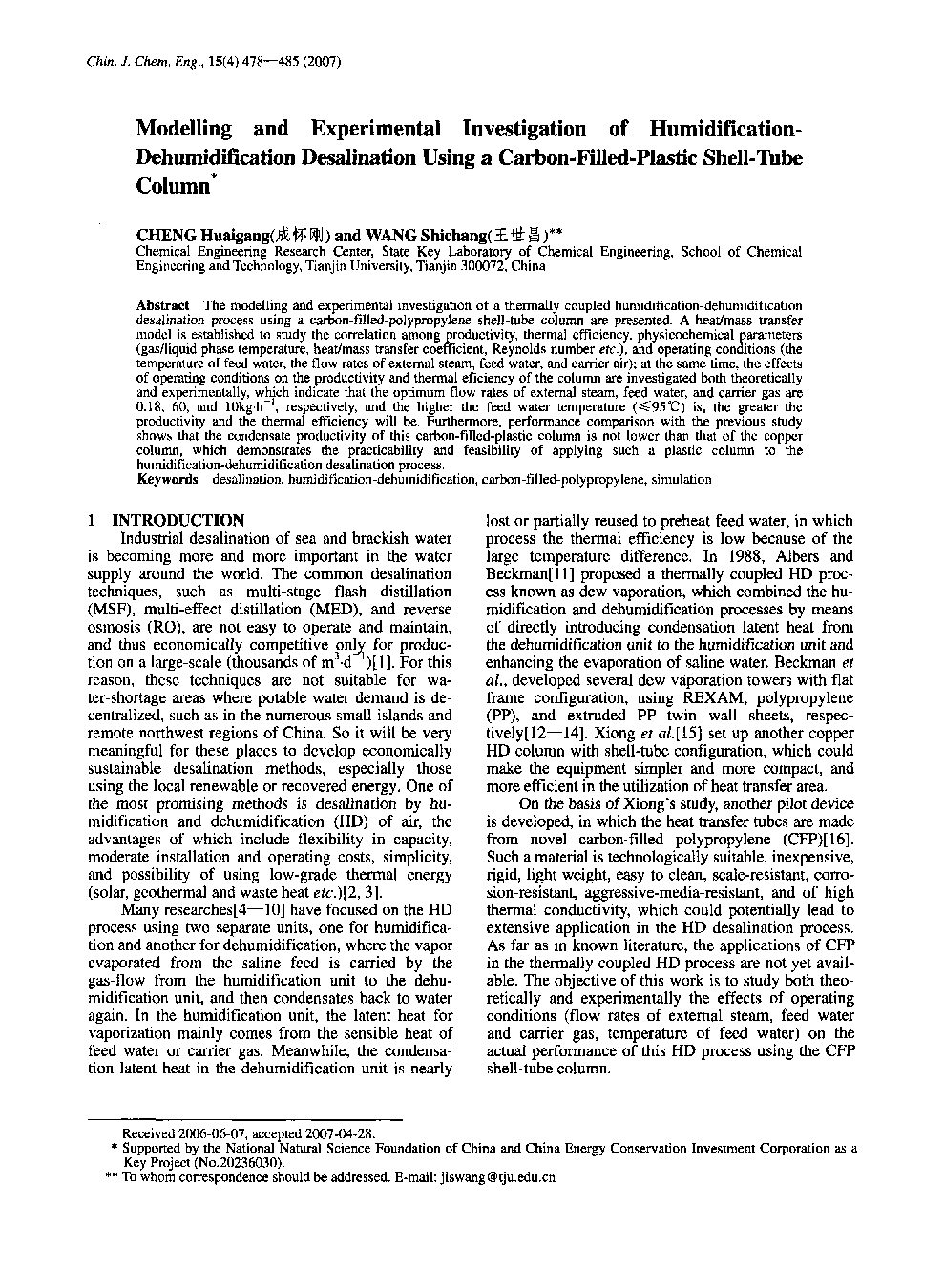| Article ID | Journal | Published Year | Pages | File Type |
|---|---|---|---|---|
| 168001 | Chinese Journal of Chemical Engineering | 2007 | 8 Pages |
The modelling and experimental investigation of a thermally coupled humidification-dehumidification desalination process using a carbon-filled-polypropylene shell-tube column are presented. A heat/mass transfer model is established to study the correlation among productivity, thermal efficiency, physicochemical parameters (gas/liquid phase temperature, heat/mass transfer coefficient, Reynolds number etc.), and operating conditions (the temperature of feed water, the flow rates of external steam, feed water, and carrier air); at the same time, the effects of operating conditions on the productivity and thermal eficiency of the column are investigated both theoretically and experimentally, which indicate that the optimum flow rates of external steam, feed water, and carrier gas are 0.18, 60, and 10kg·h−1, respectively, and the higher the feed water temperature (≤95°C) is, the greater the productivity and the thermal efficiency will be. Furthermore, performance comparison with the previous study shows that the condensate productivity of this carbon-filled-plastic column is not lower than that of the copper column, which demonstrates the practicability and feasibility of applying such a plastic column to the humidification-dehumidification desalination process.
